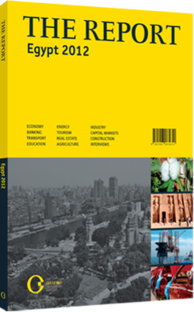Juhayna Food Industries: Consumer goods
THE COMPANY: Juhayna Food Industries is the unparalleled leader of Egypt’s packaged dairy market, enjoying a market share of about 70% in plain and flavoured milk, roughly 30% in spoonable yoghurt, and over 50% in drinkable yoghurt. The company also has a prominent position in Egypt’s relatively fragmented juice market, with a market share of 16%. Juhayna owns six plants, produces over 200 stock-keeping units (SKUs), has a daily production capacity of 2900 tonnes and operates 24 distribution centres. Exports contributed 4% of the company’s 2011 revenue, with 70% going to Libya, its main export market.
Juhayna is a primary beneficiary of Egypt’s strong demographics and low per capita consumption of milk, yoghurt and juice relative to GDP. Additionally, a gradual trend of conversion to the consumption of packaged products over loose products, which currently stands at 85% of the milk market and a much smaller 38% of the yoghurt market, has given a faster shift to packaged yoghurt than to packaged milk. Dairy is the biggest contributor to Juhayna’s revenue (50% of local sales), followed by yoghurt (29%), juice (19%), and concentrates (1%). Juice generates the highest gross margin (over 40% versus 33% for dairy and 39% for yogurt) due to vertical integration, with about 75% of Juhayna’s concentrate requirements (mainly mango, orange and guava) supplied internally.
Despite turmoil in Egypt and Libya and a later cessation of exports, Juhayna’s revenue grew a strong 21% year-on-year (y-o-y) to LE2.2bn ($368.2m) in 2011 thanks to the company’s pricing flexibility, which enables it to raise the prices of most products, even in a down market. The company’s net income, however, contracted 19% y-o-y to LE186m ($31.1m) for two reasons: first, high raw material costs could not be fully passed on to consumers, resulting in gross margin compression of 3%; and second, the company suffered a one-time extraordinary loss as a result of a fire at its yoghurt plant in April 2010. The cost of raw milk (Juhayna’s main input, 60% of cost of goods sold, 90% sourced externally) increased 18% y -o-y in 2011 on the back of significant animal feed cost inflation and heightened local unrest.
To reduce margins’ susceptibility to volatility in raw milk purchase prices (with only 8%-10% of the company’s requirements sourced internally from 40% owned associate Milkys), management started signing long-term contracts with some 70 farms to fix raw milk purchase prices based on a new pricing formula that varies with animal feed prices.
DEVELOPMENT STRATEGY: Juhayna’s overall growth strategy centres on broadening its geographical reach and expanding its distribution network. The company currently owns and operates 24 distribution centres and plans to open five more over the course of 2012 and another 10 in 2013. It doubled its distribution fleet to 813 vans in 2011 and plans to add 100-120 new trucks in 2012.
Backward integration for long-term margin enhancement is the second pillar of Juhayna’s growth strategy. The company will utilise about 67% of its initial public offer (IPO) proceeds (LE600m, $100.4m) to establish dairy farms (to supply 40-50% of its raw milk), cattle feed farms and orchards. Juhayna currently owns 18,500 feddans of land, 8500 of which will be allotted to dairy farms and 10,000 to orchards and cattle feed farms. The company plans to start with a herd of 3600 milking cows, which it expects to receive by the end of 2012 and to expand to 14,000 by the end of 2015. Commercial agriculture has already started at Juhayna’s orchards, with 2500 feddans currently up and running, and the segment contributed to revenue for the first time in 1Q 2011 (1% of 2011 top line). Upon its completion by 2015-16, the firm’s management expects the project to enhance the company’s gross margin by 300 bps.
Juhayna plans to spend the remaining third of its IPO proceeds (LE300m, $50.2m) on a relevant acquisition in the food and beverage sector, though no promising prospects have been identified at this time.
You have reached the limit of premium articles you can view for free.
Choose from the options below to purchase print or digital editions of our Reports. You can also purchase a website subscription giving you unlimited access to all of our Reports online for 12 months.
If you have already purchased this Report or have a website subscription, please login to continue.

